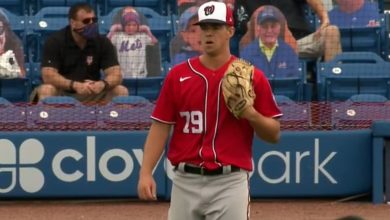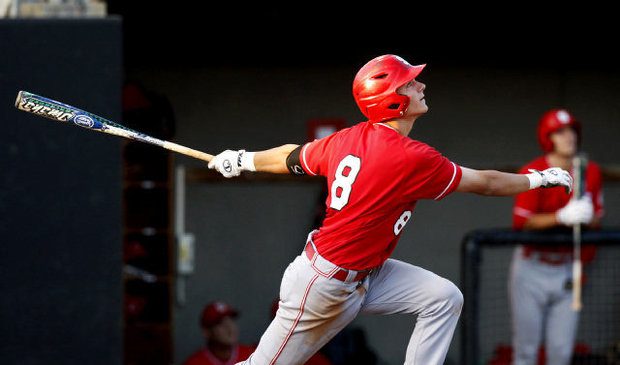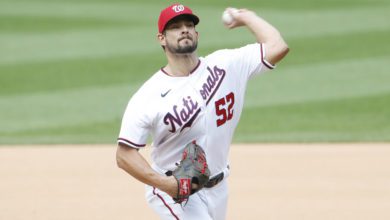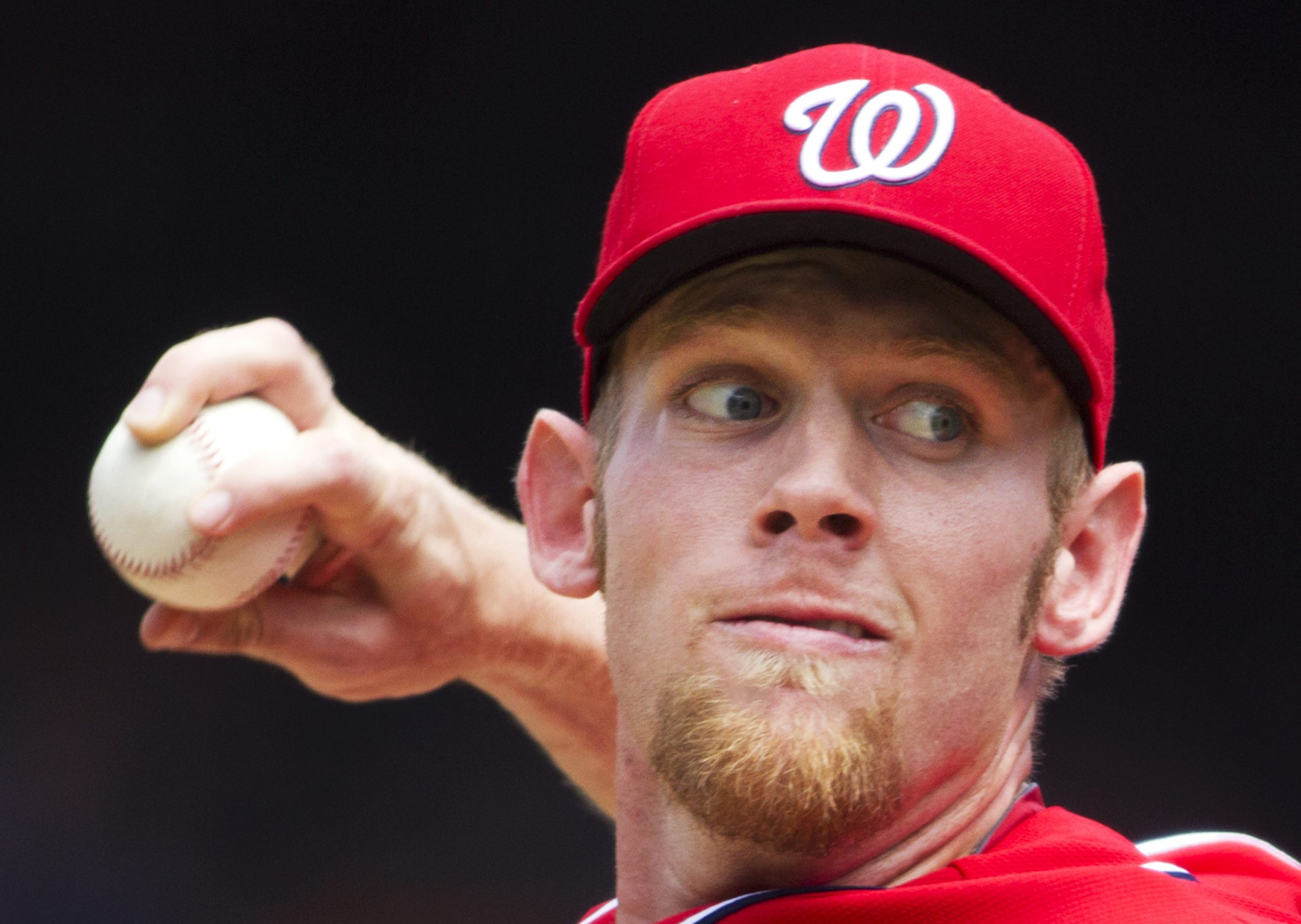
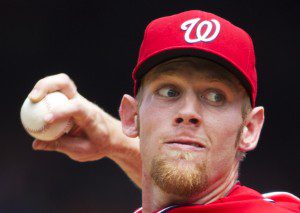
When Dan Haren came to terms with the Washington Nationals on a one-year, $13 million deal, the National League trembled with fear. All of a sudden, the team with the best winning percentage in 2012 will be even more formidable in 2013. Not only were they returning with one of the best rotations in all of baseball, but now they added another all-star caliber arm in Haren. The NL has officially been put on notice.
With Haren added to the mix alongside Stephen Strasburg, Gio Gonzalez, Jordan Zimmermann and Ross Detwiler, the Nationals have a rotation eerily reminiscent of the 1985-86 and ’88 New York Mets, the 1996-98 Atlanta Braves and the 2011 Philadelphia Phillies — all of which have gone down in history as arguably the greatest assembled. However, it is one of the Braves rotations (pick a year) that takes the cake.
Is it possible the Nationals have assembled a five-man rotation capable of being the all-time greatest? If so, what would the staff in D.C. have to do to prove to be the greatest ever assembled?
Prior to reviewing the logic compounding this puzzle, let’s clear some things up first.
The debate over the greatest pitching rotation of all time is highly contested. Some refer to the 1927 New York Yankees rotation, which consisted of Waite Hoyt (22-7, 2.63) and Herb Pennock (19-8, 3.00) or the 1954 Cleveland Indians. Some also argue in favor of the 1956 Indians, the 1971 Baltimore Orioles and the 1993 Atlanta Braves.
Arguing in favor of the pitching rotations from the aforementioned teams could win an argument depending on how well the argument is crafted in debate. However, for this analysis, the following rotations have been utilized for clear comparative purposes: the 1988 New York Mets, 1998 Atlanta Braves and 2011 Philadelphia Phillies. Each had a precise five-man rotation that at the time, appeared to be even stronger than the already dominant and familiar pitching rotations that preceded them.
In the case of the 1988 New York Mets, it was presupposed that the rotation was better than the 1986 Mets rotation that won the World Series. History tells us the ’88 Mets failed to win the title like the ’86 Mets did, but at the time, the ’88 Mets appeared stronger than the ’86 Mets because the rotation was upgraded by David Cone in 1988 over Rick Aguilera in 1986.
The same ideology applies with the 1998 Braves rotation compared to the ’96 Braves rotation that won the World Series. As for the 2011 Phillies, there is zero doubt the rotation was much better than the rotation which led the Phillies to the 2008 World Series title.
The difference between the Nationals and the teams mentioned above is obvious – Washington has yet to win a World Series. No one is saying that they are going to win a World Series, though. After all, these elite rotations, which will be compared to expectations for the 2013 Nationals, didn’t win a World Series either. No such conclusion will be drawn since there lacks a causal connection between being arguably the greatest rotation ever assembled and winning the Commissioner’s Trophy.
At 98-64, the Nationals finished as the best team in Major League Baseball last season. Led by an overpowering pitching rotation of Zimmermann, Gonzalez, Edwin Jackson, Detwiler and the innings-limited Strasburg, Washington did not disappoint in regular-season play. The playoffs, on the other hand, well, that’s a different story.
The rotation led the Nationals to the second-best team ERA in all of baseball. It also had the second-best WHIP and fourth-largest amount of strikeouts in baseball. Needless to say, it is hard to imagine getting much better.
This year will showcase a full season of Strasburg without the innings-pitched restriction. Zimmermann’s threshold will also increase, while Gonzalez looks to continue his momentum after winning 21 games in 2012. Detwiler has the most to prove. While he showed flashes of skill at times, his strikeout rate remained low, and his WAR of 1.8 was ordinary to say the least.
The biggest difference will be the change from Jackson to Haren. On the surface, there does not appear to be much difference. Last season, Jackson had a better WAR with 2.7 as compared to Haren’s 1.8. Both pitchers K/9 ratios were similar as well. On the other hand, Jackson pitched in the NL, while Haren pitched in the AL. Historically, as well as recently, the AL has been much more difficult to pitch in. But that’s not it.
Haren has a reputation for being injury prone, while Jackson does not. Despite this, Haren has pitched at least 200 innings in every season since 2005, except for 2012, while Jackson has only topped that mark twice (2009-2010). Haren is a much better pitcher in getting hitters out. Plus, Haren is making the jump from the AL West to the NL East like teammate Gonzalez did in 2012, and expectations for a more fruitful season are possible.
Now, a common thread exists among the three rotations that are arguably the greatest ever assembled. The ’88 Mets, ’98 Braves and ’11 Phillies all helped their clubs achieve the most single-season wins in each respective franchise’s history. All three failed to win not just the World Series but the NL pennant as well. If the Nationals do indeed have a comparable rotation, one which could go down in history as one of the greatest of all time, do they need to win it all?
I don’t think so.
Below is a comparative chart between season-ending wins-losses and ERA between the ’88 Mets, ’98 Braves, and ’11 Phillies pitching rotations coupled with the Bill James projections for the ’13 Nationals rotation.
|
Pitcher |
Win-Loss Record |
ERA |
|
1988 New York Mets |
||
| David Cone | 20-3 | 2.22 |
| Dwight Gooden | 18-9 | 3.19 |
| Ron Darling | 17-9 | 3.25 |
| Sid Fernandez | 12-10 | 3.03 |
| Bob Ojeda | 10-13 | 2.88 |
|
1998 Atlanta Braves |
||
| Greg Maddux | 18-9 | 2.22 |
| Tom Glavine | 20-6 | 2.47 |
| Denny Neagle | 16-11 | 3.55 |
| Kevin Millwood | 17-8 | 4.08 |
| John Smoltz | 17-3 | 2.90 |
|
2011 Philadelphia Phillies |
||
| Roy Halladay | 19-6 | 2.35 |
| Cliff Lee | 17-8 | 2.40 |
| Cole Hamels | 14-9 | 2.79 |
| Roy Oswalt | 9-10 | 3.69 |
| Vance Worley | 11-3 | 3.01 |
|
2013 Washington Nationals |
||
| Stephen Strasburg | 17-6 | 2.68 |
| Gio Gonzalez | 14-8 | 3.21 |
| Jordan Zimmermann | 13-8 | 3.32 |
| Dan Haren | 15-9 | 3.47 |
| Ross Detwiler | 10-10 | 3.98 |
Mind you, these projections for the Nationals from Bill James are conservative. Some believe, in the case of pitchers, an addition of 1-3 wins coinciding with a subtraction of 1-3 losses is more in tune with what will occur. Either way, projections do leave leeway to correct themselves.
What many will have to consider is the dominance of the pitching staff over not just the NL but all of MLB, thanks to the newly expanded interleague schedule.
In 2012, the Nationals rotation finished second in WAR in MLB among all starting rotations. Washington’s WAR of 18.1 was short of the MLB-leading Detroit Tigers WAR of 20.5. In strict NL terms, the next four starting rotations, in terms of WAR, behind Washington were the St. Louis Cardinals (17.3), Philadelphia Phillies (16.6), Milwaukee Brewers (14.7) and Cincinnati Reds (14.7).
The New York Mets rotation of 1988 finished with a WAR of 21.7, while the next best came in at 21.0 from the Kansas City Royals. For comparisons sake, the ’86 Mets WAR of 18.8 was just the fifth-best in baseball that season.
The 1998 Braves WAR of 24.7 was more than five full wins above the next-best starting rotation in MLB, the New York Yankees (19.3). The ’96 Braves WAR of 24.6 led the big show, but the difference between them and the next best was smaller, as the Royals topped out at 21.0.
The evidence for how dominant the ’11 Phillies were is also found in terms of WAR. They finished with a nearly five wins above replacement (25.5) over the next best team in baseball, the Chicago White Sox (20.9).
Even though the ’88 Mets didn’t finish with a WAR of near 5.0 or more above the second-best staff, the ’98 Braves and ’11 Phillies did. To find any other rotation that could come close to the ’98 Braves and ’11 Phillies, one would have to go back to the ’03 Yankees, ’97 Braves, ’82 Phillies, and ’70 Chicago Cubs (when dating back to 1970). Needless to say, it is remarkable that only six starting rotations finished with a WAR of near 5.0 or more better than the next best rotation over the course of the last 43 years.
Therefore, for the Washington Nationals to live up to this potential, they will need to lean on the arms in their rotation. And for the rotation to be even considered for the greatest-ever debate, it is reasonable to suspect they will have to win more than 98 games and finish with a sum WAR of nearly 5.0 or better over the next rotation. Winning the World Series, or even the NL pennant, does not appear to be a prerequisite for entering the conversation.



